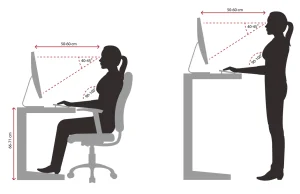
Environmental factors contributing to urban acne
You’ve nailed your skincare routine. You drink water like it’s your job. Yet, there it is—another breakout, seemingly out of nowhere. If you live in a city, the culprit might not be your habits, but your habitat. Urban acne is a real thing, and it’s fueled by a cocktail of environmental aggressors our skin faces every single day.
Think of your skin not just as skin, but as your body’s frontline defense. It’s constantly communicating with the outside world. And in a city, that world is loud, polluted, and demanding. Let’s break down the invisible enemies turning your complexion into a battleground.
The invisible blanket: air pollution and your pores
City air is thick with more than just ambition. We’re talking about particulate matter (PM), nitrogen dioxide, sulfur oxides, and a host of other microscopic nasties. This grimy cocktail doesn’t just sit on your skin’s surface. It penetrates.
Here’s the deal: these tiny particles are like microscopic sponges for other toxins. They settle into your pores, mixing with your skin’s natural oils and sweat. This creates a sticky, occlusive layer that can:
- Clog pores, leading to blackheads and whiteheads.
- Trigger oxidative stress, which breaks down collagen and irritates the skin.
- Disrupt your skin’s natural microbiome, its protective ecosystem of good bacteria.
It’s a constant, low-grade assault. Your skin, in response, can become inflamed, dull, and more prone to both clogging and those angry, red breakouts we all dread.
Hard water: the hidden skin agitator
Ever notice a filmy residue on your glass shower door? That’s scale from hard water—water high in minerals like calcium and magnesium. And it’s the water most urban plumbing systems deliver straight to your sink.
So, what’s the problem? These minerals are, frankly, a nuisance for your skin. They react with the fatty acids in your soap and cleanser, forming a scum that doesn’t rinse away cleanly. This residue sits on your skin, potentially clogging pores and disrupting your acid mantle—that slightly acidic, protective film that keeps moisture in and bad bacteria out.
The result? A compromised skin barrier. This can lead to dryness, irritation, and a complexion that feels perpetually tight yet never truly clean. It’s a frustrating cycle that makes your skin more vulnerable to everything else the city throws at it.
Stress, the city’s heartbeat (and your skin’s enemy)
This one isn’t a particle you can see, but you sure can feel it. The constant noise, the crowded commutes, the relentless pace… urban stress is a potent, internal environmental factor. And your skin is often the first place it shows up.
When you’re stressed, your body pumps out cortisol, the so-called “stress hormone.” In elevated doses, cortisol tells your sebaceous glands to produce more oil. More oil means a higher chance of clogged pores and breakouts. It also increases inflammation throughout the body, which can turn a small pimple into a massive, painful cyst.
Honestly, it’s a double-whammy. The city environment stresses you out, which stresses your skin out, making it more reactive to the pollution and hard water. It’s all connected.
Building your urban shield: a practical defense plan
Okay, enough doom and gloom. The good news is that you can fight back. Protecting your skin in the city isn’t about a magic bullet; it’s about consistent, strategic defense. Think of it as building a shield.
1. The non-negotiable: double cleansing
If you only do one thing, make it this. A single cleanse won’t cut through the film of pollution, sunscreen, and hard water residue. Start with an oil-based balm or cleanser to dissolve all that grime. Follow up with a gentle, water-based cleanser to wash it all away. It’s the single most effective way to reset your canvas every single night.
2. Antioxidants are your army
Since pollution causes oxidative damage, you need to fight back with antioxidants. Look for serums containing:
- Vitamin C: A powerhouse that brightens and protects.
- Vitamin E: Works synergistically with Vitamin C.
- Niacinamide: Calms inflammation and regulates oil.
3. Reinforce your barrier
With all this environmental stress, your skin barrier needs support. Incorporate ingredients that repair and soothe.
| Ingredient | What It Does |
| Ceramides | Repairs the skin’s natural “mortar.” |
| Centella Asiatica | Powerfully soothing and calming. |
| Peptides | Helps support skin’s structure and healing. |
4. Mitigate what you can
Small changes add up. Consider a water filter for your showerhead to soften the water. Try to find green spaces for a walk—it helps with stress and gets you away from the densest pollution for a bit. And never, ever skip sunscreen. It protects against UV, which can worsen the inflammatory effects of pollution.
Rethinking the city glow
Our skin tells a story of where we live. The vibrant energy of a city comes with a tangible, physical cost. But understanding these environmental factors—the particulate matter, the stubborn minerals in the water, the thrum of constant stress—is the first step toward reclaiming control.
It’s not about achieving a perfectly filtered, sterile existence. That’s impossible. It’s about building resilience. It’s about listening to what your skin is trying to tell you about the air you breathe and the life you lead. And then, giving it the tools to not just survive, but to thrive, right where you are.



Average Rating